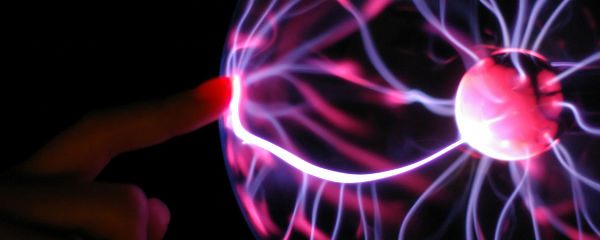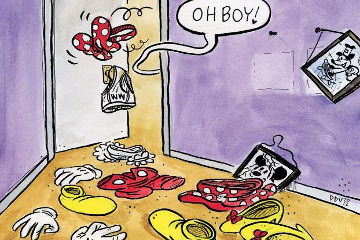What I’ve Learned:
“Knockout mouse: one lab animal that really goes to the mat for science.”
The late author Douglas Adams once said a thing about cats:
If you try and take a cat apart to see how it works, the first thing you have on your hands is a nonworking cat.
He was making a point about how living things are extraordinarily complex, even more so than things like alarm clocks and carburetors and the London Bridge — which, while also complex, can in fact be taken apart and reassembled into reasonable working order.
(By people who are not me. I struggle to reassemble a hamburger after I’ve taken the top off to adjust the pickles.)
Note that the esteemed Mr. Adams never said anything about mice.
Since 1989, scientists have been able to produce essentially the non-cat (and mostly un-messy) equivalent of what Douglas Adams described: a mouse that’s been taken apart to see how it works — and then put back together, with one of the pieces missing.
Unlike your average neighborhood mechanic or electrician, however, the missing bits of these mice are left out intentionally, to find out what they do. And before visions of Frankenmice or other murine monstrosities skitter through your head, let’s clarify that we’re talking about “pieces” at the genetic level. Nobody’s hacksawing the ears off your favorite Disney rodent.
Well. Not for science, anyway.
The term for one of these genetically-altered mice is “knockout mouse”, which sounds like someone Jessica Rabbit shares an apartment with. Or some remedial schlub you have to fight in Punchout if you get your ass kicked by Glass Joe.
Happily, it’s neither. The “knockout” part of the name refers to the knockout of a specific gene. To create a knockout mouse, scientists recreate the sequence of a mouse gene in the laboratory — but with a fatal flaw. They alter the gene sequence so that it can’t produce the functional protein it normally would. They then introduce this broken gene into stem cells collected from mice.
Because the mucked-with gene is still nearly the same sequence as the normal version, some of the stem cells will integrate the new copy into the same spot in the genome, via a process called homologous recombination. It’s a rare occurrence — the cell’s DNA has to need repair in just the right place, when the engineered gene copy happens to be handy — but researchers have designed ways to know when it happens, and to retrieve those few cells where the gene has nestled in just right.
Since each cell contains two sets of chromosomes, the engineered stem cells have one “good” copy of the target gene, in addition to the scrambled one they’ve just picked up. Those stem cells get inserted into an early-stage mouse embryo, which is then implanted into a female mouse to grow. If all goes well, the embryo grows into a baby mouse containing cells from both the original embryo and the injected-in cells. This is called a chimera. And if all goes really well, the sex organs on those baby chimeric mice will come from the injected cells, with one wonky copy of the target gene.
From there, it’s just a hop, skip and a few tiny Barry White albums to a knockout mouse. The chimeras with one wonky copy of the gene in their sperm or eggs are bred, and some of their offspring will inherit that wonky gene — along with a normal copy from the other parent. But, cross-breed a few of those single-copy mice together, and eventually you’ll come up with a mouse with a non-functional copy inherited from both parents. That’s a critter where the gene essentially doesn’t exist any more — and that’s a knockout mouse.
There are now thousands of different types of knockout mice, each demonstrating the effects a particular gene has — by its absence. Knock out one gene, and the mice without it become more susceptible to cancer. Knock out another, and they lose their hair. Another, and the mice grow huge and chubby.
Scientists use knockout mice because many of their genes are similar to ours, and often function in the same way. It’s not a perfect model, but “knockout people” are generally frowned upon in the medical community, so it’ll have to do. And knockout mouse models have been used to study everything from aging to arthritis to obesity to cancer, so they’re extremely useful as research tools.
They might also, according to Douglas Adams’ books, be hyper-intelligent pan-dimensional beings who’ve set up the Earth as a grand cosmic experiment. And he was pretty spot-on about the cat thing, so it’s worth mulling over.




